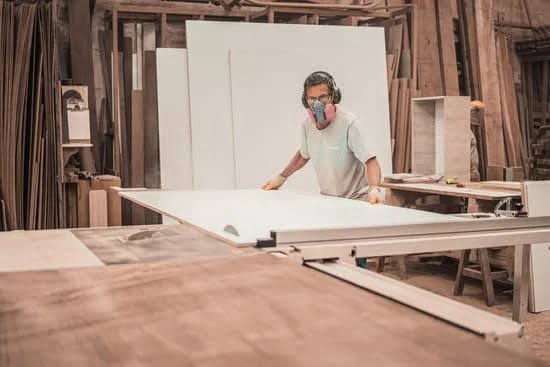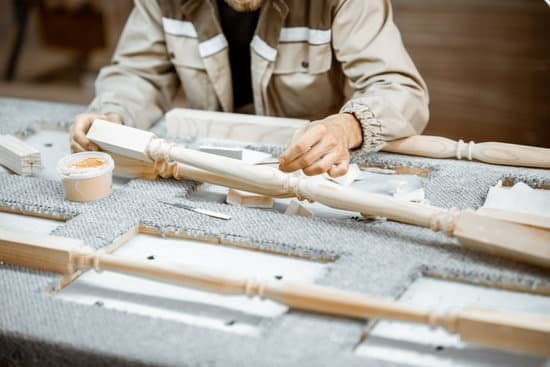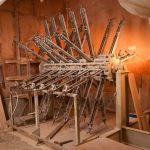Are you interested in learning woodworking but not sure where to start? Woodworking is a skill and art that has been passed down through generations, and it involves creating objects from wood. Whether you’re looking to pursue it as a hobby or a potential career, understanding the basics of woodworking is essential to getting started on the right foot.
Woodworking involves shaping, carving, and crafting wood into functional or decorative items. To begin learning woodworking, it’s crucial to have a clear understanding of the tools, techniques, and materials involved. From hand tools like chisels and saws to power tools like drills and sanders, having the right equipment is essential for any beginner woodworker.
In addition to tools and techniques, it’s also important to familiarize yourself with different types of wood and their uses. Each type of wood has its own unique characteristics and properties that can affect the outcome of your woodworking projects. Understanding which type of wood is suitable for specific applications will set you on the path towards becoming a skilled woodworker.
Essential Tools and Equipment for Beginners
Woodworking is a craft that requires the use of various tools and equipment to create beautiful and functional pieces. For beginners looking to start learning woodworking, it’s important to have a basic understanding of the essential tools needed to get started. Some of the fundamental tools for woodworking include a measuring tape, hammer, screwdrivers, chisels, hand saws, and clamps. These tools are essential for taking accurate measurements, assembling pieces of wood, and making precise cuts.
In addition to hand tools, beginners will also need to invest in some power tools to expand their capabilities in woodworking. Power tools such as a drill/driver, circular saw, jigsaw, and random orbital sander can help beginners work more efficiently and achieve professional-looking results. However, it’s important for beginners to familiarize themselves with how to safely operate these power tools before using them on any woodworking project.
When it comes to choosing equipment for woodworking, having a sturdy workbench or table is essential for providing a stable surface for cutting and assembling wood. A good quality vise is also essential for holding pieces securely in place while working on them. Additionally, having a dust collection system or shop vacuum can help keep the workspace clean and free from sawdust buildup.
As beginners start their journey into woodworking, investing in high-quality tools and equipment will not only make the learning process more enjoyable but also set them up for success in creating beautiful woodworks. It’s important to prioritize safety when using any woodworking tool or equipment and always follow proper usage guidelines to prevent accidents or injuries.
Exploring Different Types of Wood and Their Uses
Woodworking involves working with various types of wood, each with its own unique characteristics and uses. Understanding the different types of wood is essential for any beginner woodworker. Here are some common types of wood and their uses to help you get started:
- Softwoods: Softwoods come from coniferous trees and are generally easier to work with due to their softer nature. They are commonly used for building furniture, decking, and framing.
- Hardwoods: Hardwoods come from deciduous trees and are known for their durability and strength. They are often used for making cabinets, flooring, and intricate woodworking projects.
- Plywood: Plywood is a versatile material made by gluing together layers of wood veneer. It is commonly used in woodworking projects that require stability and strength, such as making shelves or cabinets.
When starting out in woodworking, it’s important to familiarize yourself with the properties of different types of wood to ensure that you select the right materials for your projects.
In addition to understanding the different types of wood, it’s also important to consider the specific uses for each type. For example, if you’re making outdoor furniture, you might want to use a rot-resistant type of wood like cedar or redwood.
On the other hand, if you’re creating intricate carvings or detailed furniture pieces, you might opt for a fine-grained hardwood like cherry or maple. By understanding the uses of each type of wood, you can make informed decisions when selecting materials for your woodworking projects.
As a beginner woodworker, take the time to explore different types of wood available in your area and learn about their characteristics and uses. This knowledge will serve as a valuable foundation as you progress in your woodworking journey.
Finding the Right Woodworking Classes or Workshops in Your Area
If you’re looking to start learning woodworking, finding the right classes or workshops in your area is a great way to get hands-on experience and guidance from experienced woodworkers. Whether you prefer in-person instruction or learning in a group setting, there are several options available for beginners.
Local Community Colleges and Adult Education Centers
Many community colleges and adult education centers offer woodworking classes for beginners. These classes often cover the basics of woodworking, safety guidelines, and hands-on projects to help you develop your skills. In addition to traditional woodworking classes, some institutions also offer specialized workshops focusing on specific techniques or projects.
Woodworking Stores and Studios
Some woodworking stores and studios host beginner-friendly workshops and classes for aspiring woodworkers. These establishments may have fully equipped workspaces where you can learn and practice using professional tools under the guidance of skilled instructors. It’s worth checking with local woodworking supply stores or studios to see if they offer any beginner-level courses.
Woodworking Guilds and Maker Spaces
Joining a woodworking guild or maker space can provide access to training opportunities, communal workspaces, and a supportive community of fellow woodworkers. Many guilds offer classes, demonstrations, and collaborative projects that cater to beginners. This can be an excellent way to learn from experienced woodworkers and expand your skills in a creative environment.
By exploring these options in your area, you can find the right woodworking classes or workshops that suit your learning style and schedule. Whether it’s through formal instruction at a community college or hands-on learning at a local studio, taking the time to invest in foundational education will set you on the path towards developing solid woodworking skills.
Online Resources and Tutorials for Beginner Woodworkers
As a beginner in woodworking, finding the right resources and tutorials is crucial to your learning journey. Thankfully, there are plenty of online platforms and websites where you can access a wide range of resources to help you get started. Websites such as YouTube have an abundance of tutorials on woodworking, ranging from basic techniques to advanced skills. Many experienced woodworkers and craftsmen share their expertise through detailed videos that can be incredibly helpful for beginners.
Another great online resource for beginner woodworkers is woodworking forums and communities. These platforms allow you to connect with fellow woodworkers, ask questions, seek advice, and learn from the experiences of others. Joining these communities can provide valuable insights and guidance as you navigate your way through the world of woodworking.
In addition to video tutorials and online forums, there are also many websites and blogs dedicated to providing tips, tricks, and step-by-step guides for woodworking projects. These resources often include detailed instructions, tool recommendations, and even free project plans that are perfect for beginners looking to improve their skills. Whether you prefer written articles or video demonstrations, there’s no shortage of online resources available to help you kick-start your woodworking journey.
| Online Resource | Description |
|---|---|
| YouTube | An extensive collection of woodworking tutorials ranging from beginner to advanced levels. |
| Woodworking Forums/Communities | A platform to connect with other woodworkers, seek advice, and learn from shared experiences. |
| Woodworking Blogs/Websites | Offering tips, tricks, step-by-step guides, tool recommendations, and free project plans for beginners. |
Safety First
When starting out in woodworking, it’s crucial to prioritize safety. Whether you’re using power tools or hand tools, there are certain safety measures that should always be followed to prevent accidents and injuries. Here are some important tips for woodworking beginners to ensure a safe and enjoyable experience:
- Wear the proper safety gear: Always wear safety goggles, a dust mask, and ear protection when working with wood. Gloves can also provide protection from splinters and sharp edges.
- Keep your work area clean and organized: A clutter-free workspace reduces the risk of accidents and allows for better focus on the task at hand.
- Use tools properly: Before using any tool, make sure you understand how it works and how to use it safely. Follow the manufacturer’s instructions and guidelines for each tool.
In addition to these tips, it’s essential to educate yourself about the potential hazards of woodworking and how to mitigate them. Taking a safety course or workshop can provide valuable information on best practices for injury prevention in woodworking.
Lastly, always be mindful of your surroundings when working with wood. Ensure that your workspace is well-lit and ventilated, and keep distractions to a minimum. By following these safety tips, you can create a safe environment where you can fully enjoy learning and practicing woodworking.
Simple Woodworking Projects for Beginners to Get Started
Once you have a basic understanding of woodworking and have acquired the essential tools and equipment, it’s time to get your hands on some simple woodworking projects. These projects will not only allow you to apply what you’ve learned but also help you build confidence and skill in working with wood. Here are some simple woodworking projects for beginners to get started:
Basic Shelves
One of the simplest woodworking projects for beginners is building basic shelves. This project will allow you to practice measuring, cutting, and assembling pieces of wood. You can start with a small set of shelves for your garage or workspace before moving on to more complex designs.
Wooden Planter Boxes
Building wooden planter boxes is another great project for beginners. It’s a practical project that will teach you how to create joints, assemble pieces, and finish wood surfaces. Plus, you’ll end up with a beautiful piece that can be used to display plants or flowers in your home or garden.
Jewelry Hanger
For those interested in working with smaller pieces of wood, creating a jewelry hanger is an ideal beginner project. This project will help you practice cutting small pieces of wood, sanding, and finishing techniques. Additionally, it’s a functional item that can be used to organize and display jewelry.
These simple woodworking projects are just the beginning of your journey into the world of woodworking. They will provide you with invaluable hands-on experience, allowing you to hone your skills and gain confidence in working with wood. Consider starting with one of these projects before advancing to more complex builds as you progress in your woodworking journey.
Building a Solid Foundation
As a beginner in woodworking, it is important to build a solid foundation for your skills by practicing and perfecting your techniques. One of the best ways to start is by focusing on the fundamentals of woodworking, such as understanding the properties of different types of wood and how to properly use essential tools and equipment. This knowledge will form the basis for all your future woodworking projects.
To practice and improve your woodworking skills, consider starting with simple projects that do not require advanced techniques. Small items like a basic bookshelf or a wooden picture frame are great projects for beginners to hone their skills without feeling overwhelmed. As you gain confidence and experience, you can gradually move on to more complex projects.
A key tip for practicing and perfecting your woodworking skills is to pay attention to details. Take the time to measure precisely, cut accurately, and assemble your pieces carefully. Practice makes perfect in woodworking, so don’t be discouraged by mistakes or imperfections in your early projects. Instead, use them as learning opportunities to improve and refine your skills for future endeavors. Remember that patience and persistence are crucial when it comes to mastering the art of woodworking.
As you continue to practice and perfect your woodworking skills, consider seeking feedback from more experienced woodworkers or instructors. Constructive criticism can help you identify areas for improvement and learn new techniques. Additionally, taking advanced woodworking classes or workshops as you progress will provide you with valuable guidance and hands-on experience that will help elevate your skills to the next level.
The Next Steps
In conclusion, embarking on the journey of learning woodworking can be incredibly rewarding and fulfilling. Once you have grasped the basics and gained experience with simple projects, it’s time to advance your skills and techniques. This is where you can truly begin to showcase your creativity and craftsmanship.
As you progress in your woodworking journey, consider investing in more advanced tools and equipment to tackle more complex projects. Additionally, seek out mentorship or advanced woodworking classes to learn from experienced craftsmen. Learning new techniques and honing your skills will allow you to take on more intricate and challenging projects, expanding your capabilities as a woodworker.
Furthermore, don’t underestimate the value of learning from online resources and tutorials as you advance in your woodworking journey. There are countless resources available on the internet that can provide valuable insight into advanced woodworking techniques, project ideas, and tips for taking your skills to the next level.
By continuing to educate yourself through a variety of mediums, you can broaden your knowledge base and continue to grow as a woodworker. Remember that mastering woodworking is a continual process of learning and improvement, so stay dedicated to advancing your skills where to start learning woodworking.
Frequently Asked Questions
Can You Teach Yourself Woodworking?
Yes, it is possible to teach yourself woodworking. There are many resources available such as books, online tutorials, and woodworking forums. It will require patience, practice, and a willingness to learn from mistakes.
How Do I Start Woodworking With No Experience?
Starting woodworking with no experience can be intimidating, but there are some initial steps you can take. Researching basic woodworking techniques, investing in essential tools, and starting with simple beginner projects are all good ways to begin.
How Do I Start Being a Woodworker?
To start being a woodworker, you will need to familiarize yourself with different types of wood, tools, and safety precautions. Developing your skills through practice and taking on small projects will help you gain confidence in your abilities as a woodworker.

Hi everyone! I’m a woodworker and blogger, and this is my woodworking blog. In my blog, I share tips and tricks for woodworkers of all skill levels, as well as project ideas that you can try yourself.





